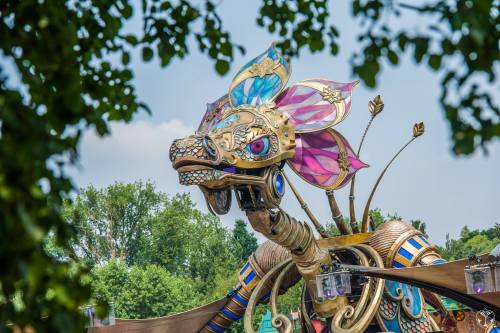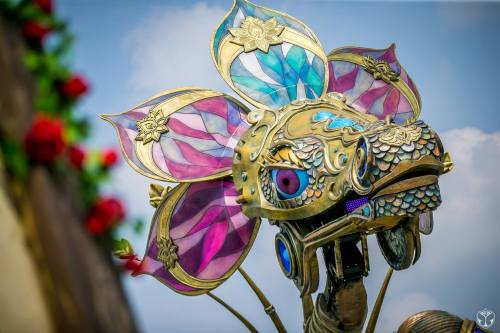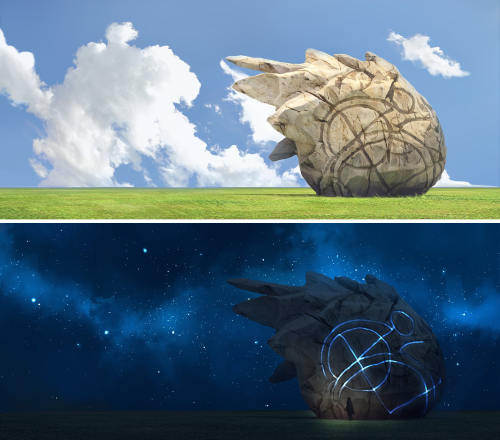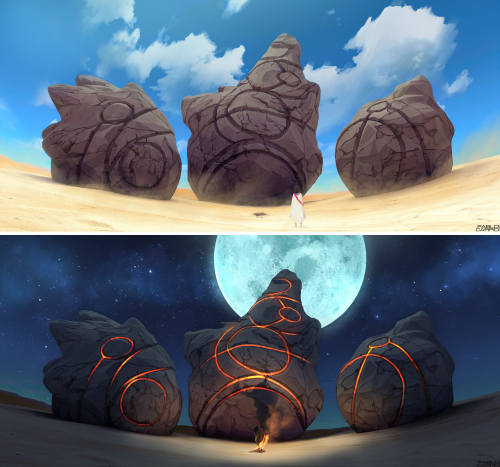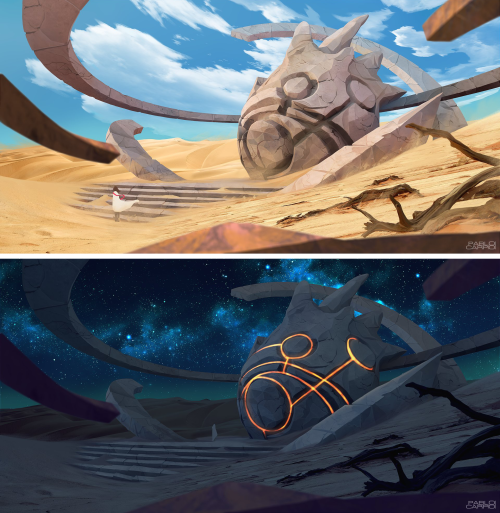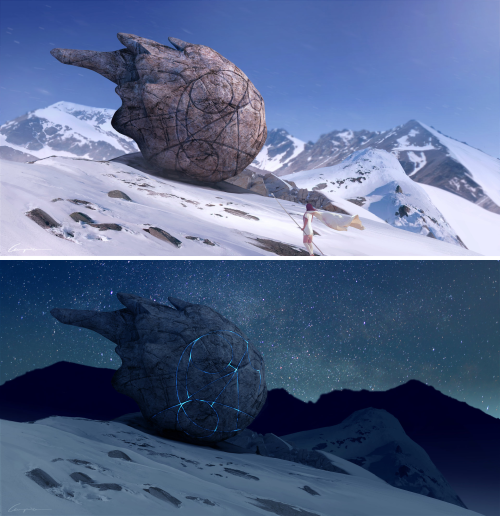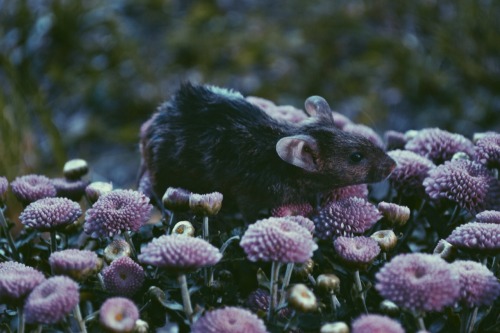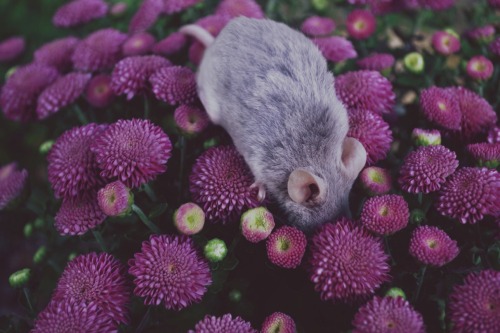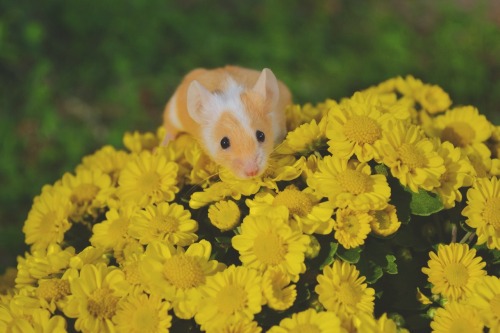208 posts
Latest Posts by othermanymore - Page 5

Idnrik-beast (rus. Индрик, derived from old rus. Inorog (Инорог) — “unicorn”) — is a mythological “father of all beasts” from russian legendary. Mentioned in famous Golubinaya (Голубиная) Book (a collection of Eastern-Slavic folk spiritual poems and psalms of the late XV — early XVI century). It is believed that Indrik took form of an enormous creature with a bull’s body, head of a horse and legs of a deer. The can have both one or two horns. Indrik is a master of all groundwaters and underground troves, the protector and king of animals. According to many works of folklore, under certain circumstances Indrik can act as a magical helper of the hero, helping him to find treasure and get rid of the enemies.






Jessica Madorran - http://jmadorran.tumblr.com - https://www.etsy.com/shop/jessicamadorranart?ref=profile_shopicon - https://www.artstation.com/artist/jmadorran - https://jessicamadorran.threadless.com - http://jessicamadorran.storenvy.com - https://www.inprnt.com/gallery/jmadorran - http://jmadorran.blogspot.com.es

A Seljuk (or Seljuq) silver ring depicting a lion, dated to the 11th to 12th centuries CE. This image was found on WordPress and attributed to Christie’s.
Extroverted Introverts: Ten things to know
Also known as an ambivert, an extroverted introvert is someone who exhibits qualities of both introversion and extroversion.
1. Their spot on the spectrum changes with their environment.
Your ambivert friend may be loud and gregarious around their family, but quiet and thoughtful at the office. Seeing them in both situations may feel like meeting two entirely different people.
2. Talking to strangers is fine – but don’t expect them to keep it to small talk.
Although an ambivert can hold up their end of a conversation, talking about the weather will not be enough to engage them. Their social energy is limited enough that they won’t want to waste it on meaningless chatter. They will likely push the conversation into deeper territory or bow out entirely.
3. They like to be alone – they don’t like to be lonely.
There is a big difference between the two. Choosing to sit at home with a tub of ice cream and a book feels fantastic. Sitting at home because nobody called them back feels sad and lame.
4. Getting them out of the house can be a challenge.
If you catch your friend on a highly introverted day, you may just be better off leaving them at home. They might manage to be social, but they’ll just be thinking about their books and their couch the whole time.
5. If they’re new, you can find them in the back of the room.
An introverted extrovert will approach new situations with cautious excitement. If they know someone in the group, they will likely cling to them a bit as they become comfortable. If they do not, they might waver on the edge of the crowd, slowly getting used to the water rather than jumping in all at once.
6. They’re selectively social.
They don’t mean to be snobs. They just have limited social energy and prefer interacting one-on-one or in small groups. For this reason, they can only afford to invest their social time and energy in those who they feel truly connected to.
7. Making friends is easy. Keeping them is hard.
They like talking to people, but they value their alone-time, as well. This can make maintaining a friendship tricky. If your ambivert friend makes an effort to consistently invest time and energy in your friendship, be glad. You are truly special to them.
8. Their social desires change with the breeze.
They might be desperate to hang out with you on Friday, but then not answer your call on Saturday. They’re not mad at you. They’re just super comfortable in bed watching films.
9. They can talk to you for hours.
If you manage to catch them in a one-on-one situation, an extroverted introvert will just not shut up. Once their interest is engaged, there’s no stopping them.
10. Listening is great too, though.
Sometimes they want to be a part of the action, but their social energy levels are too low for them to contribute in a meaningful way. Listening allows them to get to know you without burning up their social fuel. They also know its value from their chattier moments when they are desperate for an ear.




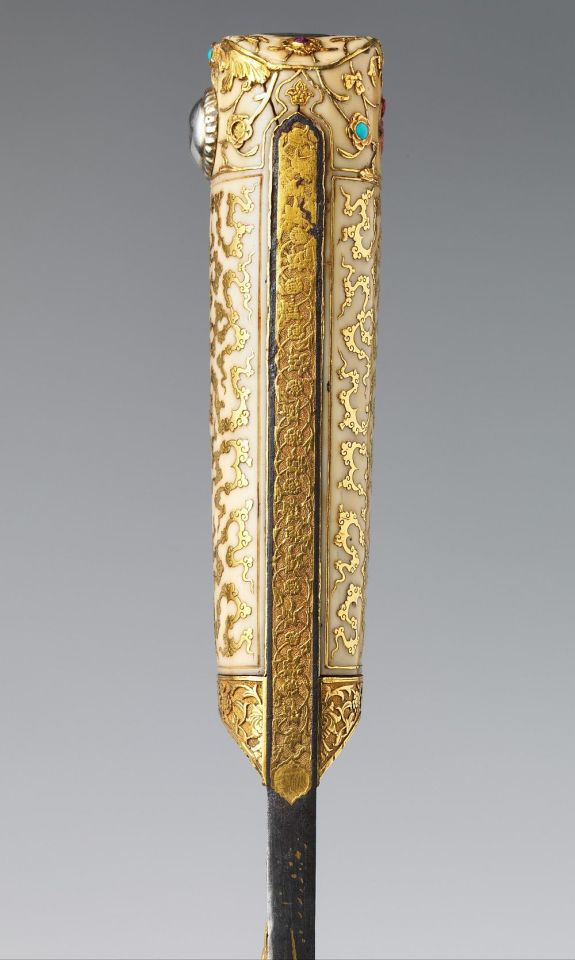
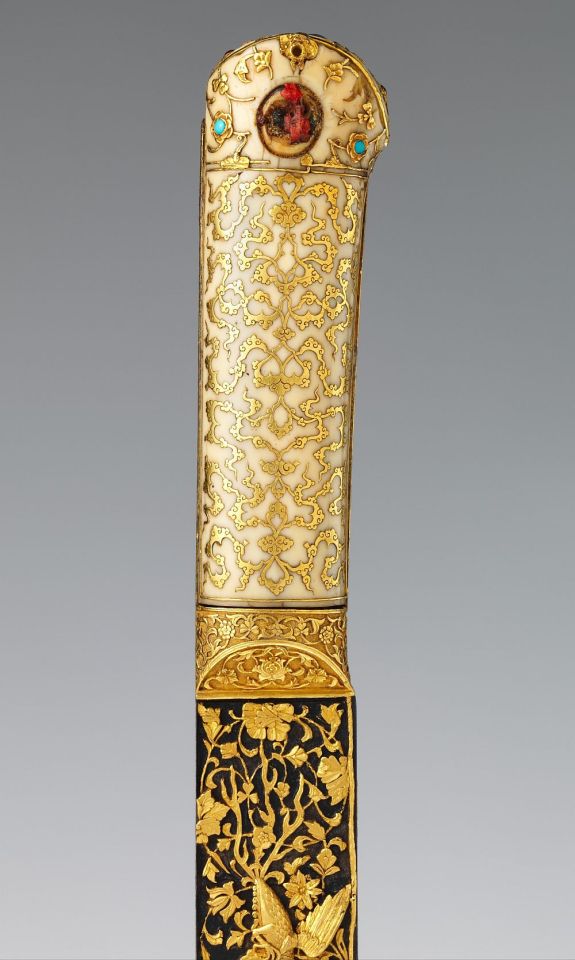




Yatagan Sword from the Court of Süleyman the Magnificent (reigned 1520–66)
Dated: circa 1525–30
Sword maker: Workshop of Ahmed Tekelü (possibly Iranian, active Istanbul, ca. 1520–30)
Geography: Istanbul
Culture: Ottoman, Istanbul
Medium: steel, gold, ivory (walrus), silver, turquoise, pearls, rubies
Measurements: overall length 23 3/8 inches (59.3 cm); blade length 18 3/8 inches (46.7 cm); weight 1 lb. 8 oz. (691 g)
Exquisite workmanship and lavish use of precious materials distinguish this sword as a princely weapon and exemplifies the opulence and refinement of Ottoman luxury arts. Almost identical to a yatagan (now in the Topkapi Palace, Istanbul) made in 1526–27 by the court jeweller Ahmed Tekel, for the Ottoman sultan Süleyman the Magnificent (r. 1520–66), this sword was undoubtedly made in the same imperial workshop.
The gold incrustation on the blade depicts a combat between a dragon and a phoenix against a background of foliage scrolls. These figures, like the gold-inlaid cloud bands and foliage scrolls on the ivory grips, are Chinese in inspiration, and were probably introduced into Ottoman art through contacts with Persia.
This sword is one of the earliest known yatagans, distinctly Turkish weapons characterised by a double-curved blade and a hilt without a guard. Yatagans were commonplace in Turkey and the Balkans in the eighteenth and nineteenth centuries and served as sidearms for the elite troops known as Janissaries.
Source: Copyright © 2016 Metropolitan Museum of Art





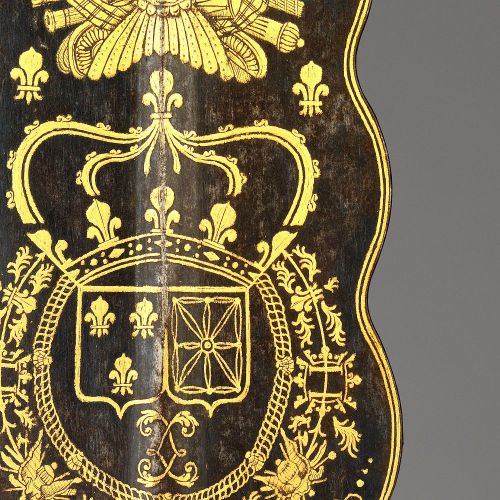
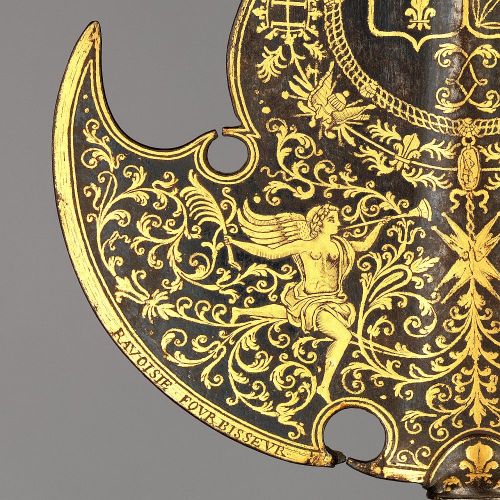
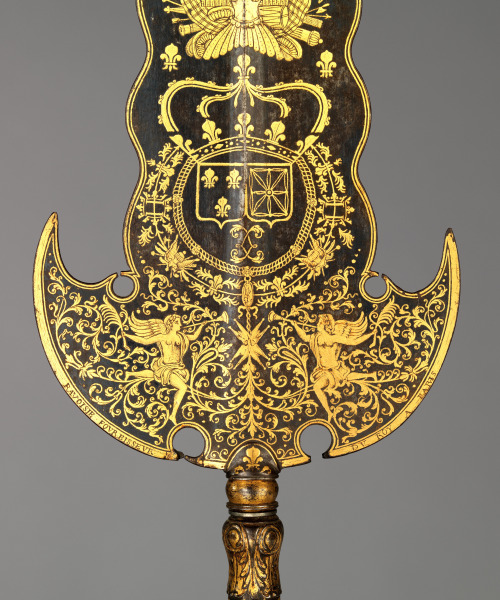
Partisan Carried by the Bodyguard of Louis XIV (1638–1715, reigned from 1643)
Dated: circa 1678–1709
Sword cutler: inscription probably refers to Bonaventure Ravoisie (French, Paris, recorded 1678–1709)
Culture: French, Paris
Medium: steel, gold, wood, textile
Measurements: overall length 94 1/8 inches (239 cm); length of head 22 9/16 inches (57.3 cm); width of head 6 ½ inches (16.5 cm)
Inscription: decoration on this partisan features a sunburst surmounted by Louis XIV’s motto, NEC PLURIBUS IMPAR (Not equaled by many); inscribed along the curved lower edge on both sides of the blade: RAVOISIE FOVRBISSEVR DV ROY A PARIS
Provenance: Ex coll.: de Dino
This partisan, along with two like it also in the Metropolitan Museum’s collection (acc. nos. 14.25.454, 04.3.64), are thought to have been carried by the Gardes de la Manche (literally, “guards of the sleeve,” indicating their close proximity to the king), an elite unit of the bodyguard of Louis XIV.
This example (along with 04.3.64) bears the king’ motto and sunburst above the crowned arms of France and Navarre, which are encircled by the collars of the royal orders of the Holy Spirit and Saint Michael. It is inscribed RAVOISIE FOVRBISSEVR DV ROY A PARIS, probably referring to Bonaventure Ravoisie, a royal cutler recorded between 1678 and 1709.
The other partisan (14.25.454) is from a small group designed by Jean Bérain the Elder (1637–1711) for the marriage of Louis’s niece Marie-Louise d'rléans to Carlos II of Spain in 1679. The decoration features a sunburst surmounted by the king’s motto, ‘NEC PLURIBUS IMPAR’ (’not equalled by many’). Beneath, the sun god Apollo is being crowned with laurel by the winged figure of Fame. The sunburst and Apollo were favourite symbols of Louis XIV, the self-styled Sun King.
Source: Copyright © 2016 The Metropolitan Museum of Art




Silver Dagger
Dated: 20th century
Culture: probably Russian
Medium: silver, enamel, gilding
The dagger’s blade features a blue enamel and gilt and Cyrillic “KF” marks with Russian silver stamps.
Source: Copyright © 2016 Jones & Horan Auction Team

Tellurium
Locality:
Faţa Băii (Facebánya; Facebay; Fatiabaja), Zlatna (Zalatna; Zalathna), Alba Co., Romania
Stephan Wolfsried’s Photo

lakshmi menon in vanity fair italy, 2011
i just want to look like her



Neelam Gill - Glamour UK November 2015
photos Pawel Psyz stylist Alessandra Steinherr hair Lyndell Mansfield makeup Polly Osmond

Naturally etched Garnet that looks like a crazy cool city photographed by Enrico Bonacina found via @dusted77 ////////
www.mindat.org/gallery-13835.html
www.instagram.com/dusted77
www.mineraliety.com





Paper Knives
Dated: Meiji Period (1868-1912)
Culture: Japanese
Measurements: overall length 27.5 - 34 cm
Both knives have brass blades engraved with floral motifs with grips featuring high -and bas-relieved effigy of birds.
Source: Copyright © 2016 Czerny’s International Auction House S.R.L.

Spangolite
Locality:
Mex-Tex Mine, Bingham, Hansonburg District, Socorro Co., New Mexico, USA
Blue green transparent bipyramidal Spangolite crystals.
Collection and photo Stephan Wolfsried


Skeletal Galena - 9th Septemvri mine (Deveti Septemvri mine), Madan ore field, Rhodope Mts, Smolyan Oblast, Bulgaria










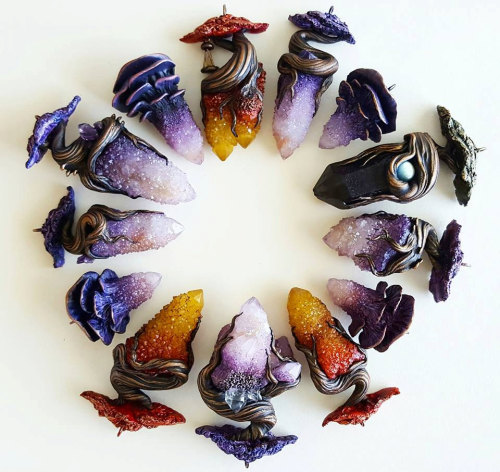
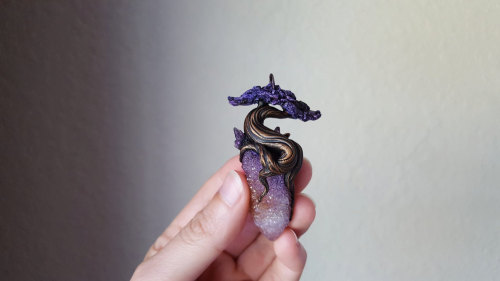
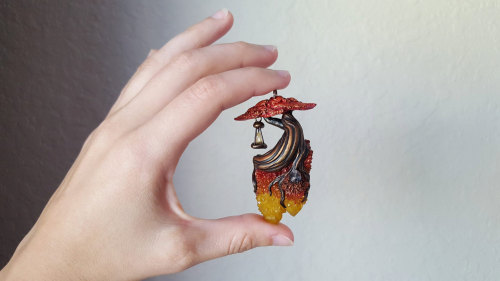
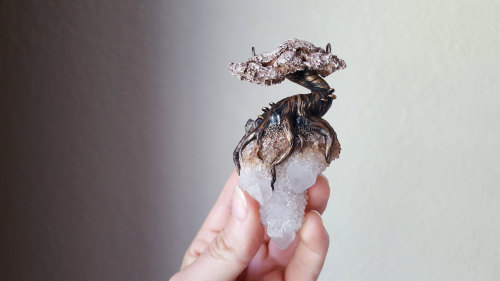
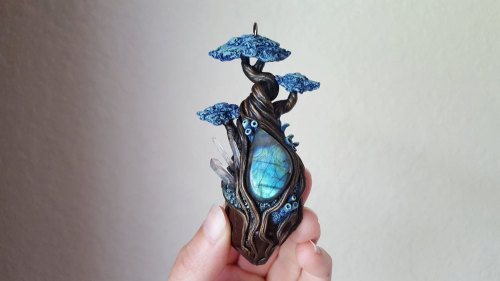
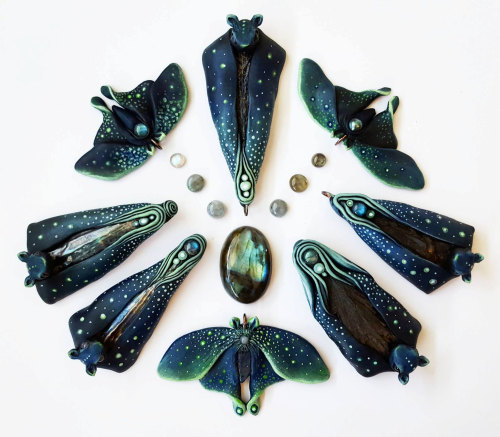
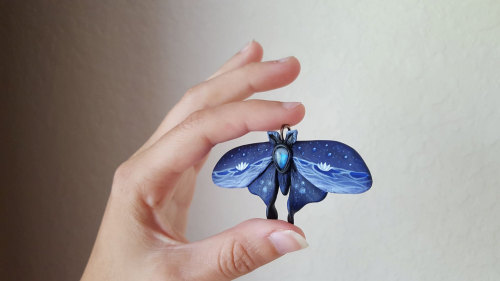
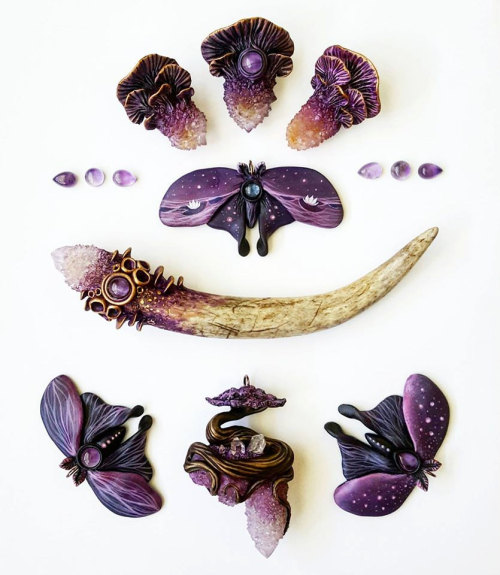
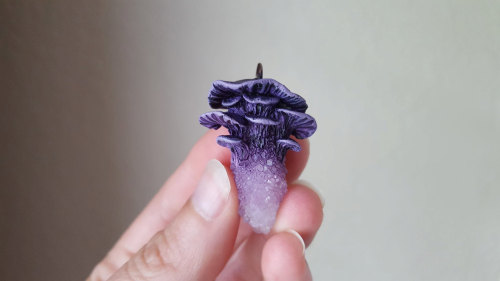
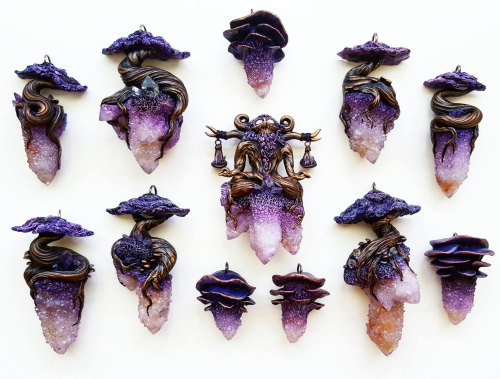
Pendants by ElementalUrchin on Etsy
• So Super Awesome is also on Facebook, Twitter and Pinterest •





















